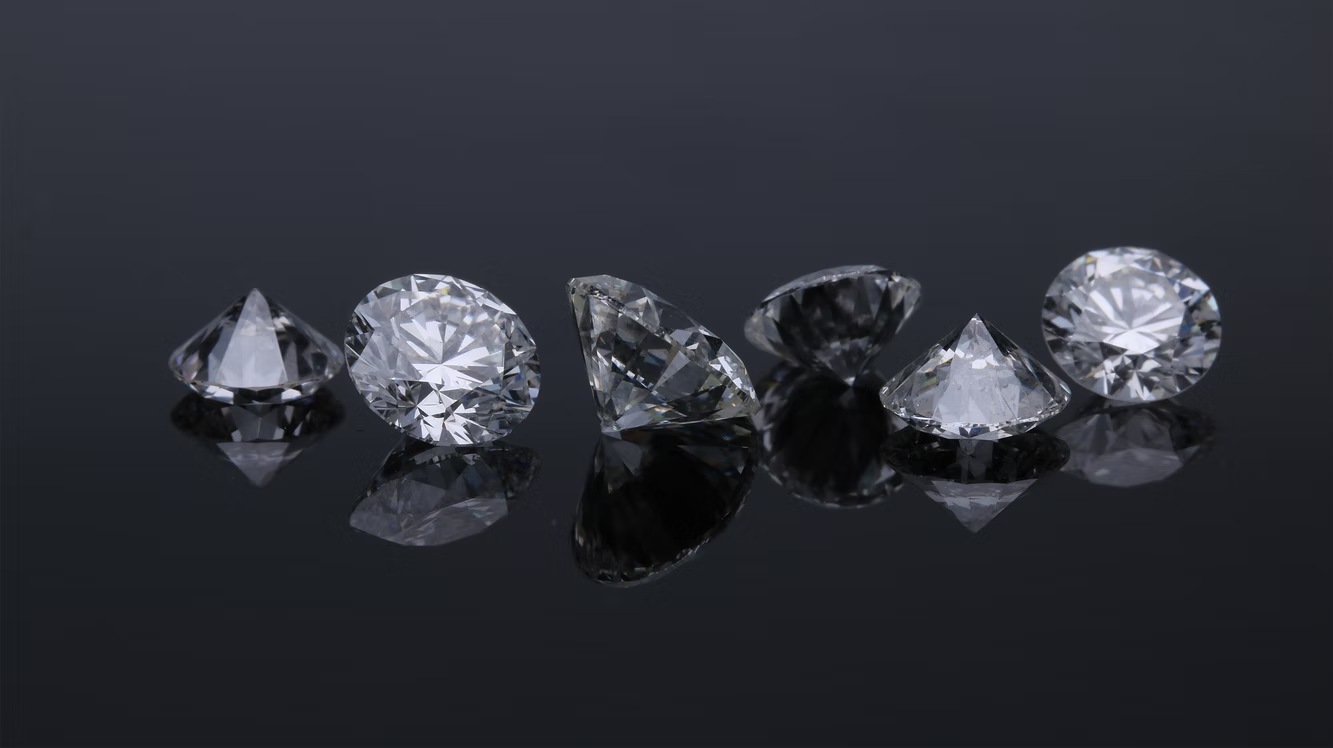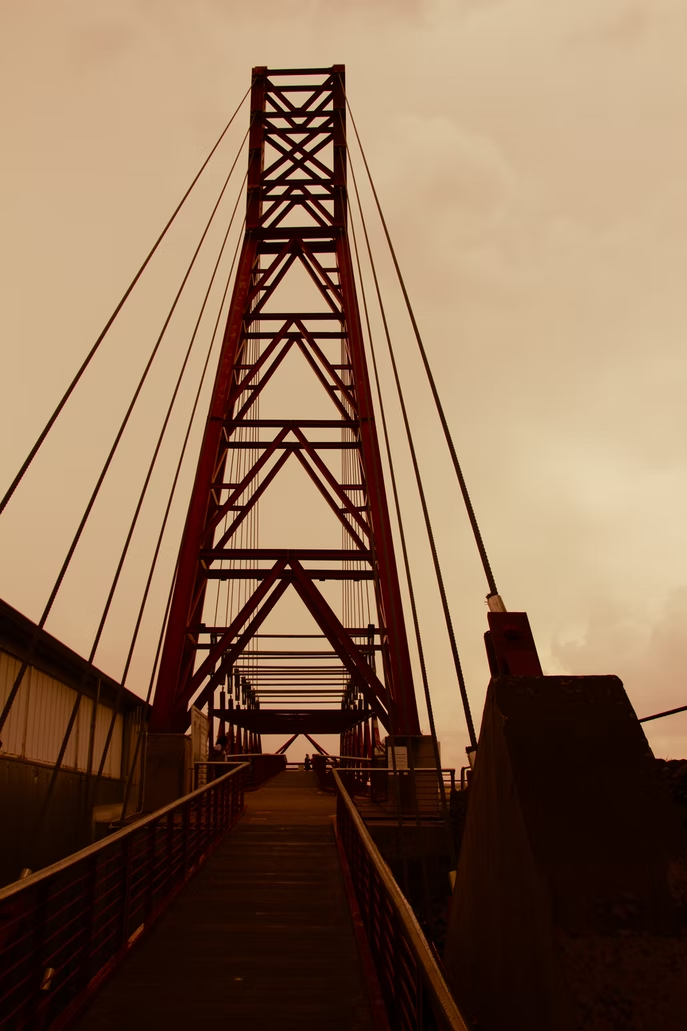Kimberley is a northern city in South Africa, with an interesting past, the city become the most important spot for diamondindustry for almost a century whith the diamond fever that make the city develop like no other in the colonial South Africa, the decandence of the diamond industry in the city made Kimberley fell after a great risebut nowadays is still a very interesting place to visit and we give you in this article the full history of since the discovery and creation of the "Big Hole" the most importante diamond mine in the world for decades and the interesting places you can visit right nowin the city if you are interesting in traveling to buy diamondsin site.
The Great Discovery
The northern Cape was a hot and barren place in March 1867. Erasmus Stephanus Jacobs, 15, on the other hand, had enough to do as he ran about the family farm De Kalk in Hopetown, playing with the 'klippies' (120km south of present day Kimberley). When Erasmus' neighbor, oom Schalk van Niekerk, asked if he might borrow one of the play stones he had unearthed a year earlier, Erasmus was amused.
John O'Reilly, a relative who lived a few hours away at 'Rooikop,' received the stone from Schalk. O'Reilly seldom stayed in one place for long, since he went by ox-wagon for commerce and hunting, and he regularly shot lions on his excursions to the north. The hardness and weight of the stone prompted Schalk to assume it was a diamond.
O'Reilly exhibited the stone to Jewish storekeepers in Hopetown, who assumed it was a topaz. When the Acting Civil Commissioner, Lorenzo Boyes, suggested he try it on a piece of glass, he was ready to hurl it at Colesberg. It arrived in a simple package and was recognized as a 21.25-carat brownish yellow diamond by Dr. W.G. Atherstone of Grahamstown, one of the few people in the Cape Colony who understood anything about minerals and stones. Dr. Atherstone gave it to Mr. Southey, the Colonial Secretary. It was afterwards purchased for £1,500 by Sir Philip Wodehouse, the Governor of the Cape Colony at the time. This diamond is the rock on which South Africa's future success will be built,' said Southey. The diamond was first displayed at the Paris Exposition in 1867 and then cut into its current shape, earning it the nickname "The Eureka Diamond."
By usual standards, this 10.73-carat brilliant is not spectacular. It was, however, cut from the world's first diamond, discovered in South Africa in 1866, and hence has historical value.
The Rise Of Kimberley
Erasmus Jacobs, who never discovered another diamond, was fortunate than Schalk van Niekerk. Schalk exchanged a shepherd child for a stone after learning about precious stones, and three years later he received 500 sheep, 10 oxen, and a horse. Van Niekerk's possessions were practically everything gone, although he sold the raw crystal to the Lilienfield Brothers in Hopetown a few days later for £11,200. Louis Hond, a diamond cutter, bought the stone and fashioned it into a "oval, three-sided brilliant" before selling it for £25,000 to William Ward, Earl of Dudley.
Schalk van Niekerk was luckier than Erasmus Jacobs, who never found another diamond. After learning about precious stones, Schalk traded a shepherd child for a stone, giving him 500 sheep, ten oxen, and a horse three years later. It was nearly all of van Niekerk's belongings, but he sold the raw crystal to the Lilienfield Brothers in Hopetown for £11,200 a few days later. The stone was then purchased by Louis Hond, a diamond cutter, and fashioned into a "oval, three-sided brilliant" before being sold for £25,000 to William Ward, Earl of Dudley.
The Diamond Fever
These two discoveries sparked the first diamond rush to the Orange River's banks in 1869. However, in 1870, on the gravel banks of the Vaal River at Barkly West, a far greater discovery was made (35km north-west of present day Kimberley). Diamonds were discovered in the mud brick walls of Cornelius du Plooy's Bultfontein (Hilly fountain) farmhouse at the height of the rush to these river diggings. The home was demolished, and the place is now the Bultfontein Mine's gigantic hole in the ground.
Children discovered diamonds while playing near Du Toit's Pan on their father's farm Dortsfontein later that year, in December 1870. (Dry fountain). The site became the second huge hole in the ground of Dutoitspan Mine after an army of diggers stampeded there. The Dutoitspan Mine was named after Abraham Paulus du Toit, who owned the farm Dorstfontein and constructed a tiny house near to the Pan, a basin fashioned like a saucepan that stores water. On May 12, 1865, Du Toit sold the farm to a Mr Geyer for £525, then on January 6, 1869, he sold it to Adriaan J. van Wyk for £870.
A servant working for a group of Colesberg diggers digging at the Du Toit's Pan discovered three diamonds on a little kopje (hillock) known locally as Colesberg Kopje, just a few hundred meters from the earlier find on the estate Vooruitzicht, in July 1871. As a new surge of diggers descended on what was also known as the De Beers Mine, Colesberg Kopje quickly became an indentation and finally a crater (the earlier diggings on the same farm became known for a while as Old De Beers).
The mining camps that surrounded the first three mines were given their names after the mines themselves. For obvious reasons, the camp was dubbed New Rush after the recent find. Over the next several months, New Rush's digger camp took away Old De Beers' previous site.
The fourth gigantic hole in the ground became known as Kimberley Mine after New Rush was renamed Kimberley in 1873. It is now simply known as The Big Hole.
The top four minesof New Rush, Dutoitspan, Bultfontein, and Old De Beers were roughly circular in shape, and claim holders erected their dwellings as close to the mines as possible, and traders, storekeepers, and publicans put up their buildings in any vacant spot... thus each mining camp was composed of a central group of workings surrounded by a ringof shacks, shanties, huts and shelters constructed by claim holders.
In 1871, the satellite township (now known as Kgosi Galeshewe after the baTlhaping leader) was founded. On behalf of the Cape Governor, British Colonial Commissioners arrived in New Rush on November 17, 1871. Governor Barkly's visit to New Rush in September 1872 was prompted by digger complaints and brief rioting, during which he announced a proposal to declare Griqualand West a Crown Colony instead. In January 1873, Lieutenant-Governor Richard Southey will arrive in the proposed Crown Colony.
Months went by with no trace of the declaration or the promised new constitution with representative government provisions. The hold-up was caused by Lord Kimberley (John Wodehouse, 1st Earl of Kimberley), Secretary of State for the Colonies, who insisted that before electoral divisions could be created, the localities had to be given official recognition "good and comprehensible names His Lordship refused to be associated with a vulgarism like New Rush, and when it came to the Dutch term Vooruitzicht, he couldn't spell or pronounce it."
The matter was forwarded to Southey, who forwarded it to J.B. Currey, his Colonial Secretary. At the time, a correspondent noted, "Currey proved himself a competent diplomat when it came to calling New Rush. By referring to the primary electoral division as 'after His Lordship,' he ensured that Lord Kimberley would be able to spell and pronounce the name."
On July 5, 1873, a proclamation changed the name of New Rush to Kimberley. "We went to sleepin New Rush and woke up in Kimberley, and so our dream was gone," this sentiment was conveyed in an editorial in the Diamond Field newspaper. Kimberley was incorporated as a municipality in 1877.
Bultfontein's prior camp was absorbed by Du Toit's Pan's digging camp, which was eventually renamed Beaconsfield after Lord Beaconsfield, a former British Prime Minister (Benjamin Disraeli, Earl of Beaconsfield). In 1882, a tramway was built to connect Kimberley and Beaconsfield, and the streets were lighted by the first electric lights in Southern Africa. In 1888, Rhodes' De Beers Mine and Barney Barnato's Kimberley Central Mining Company merged for the first time.
The Wesselton Mine began operations in 1890, close to the Bultfontein and Dutoitspan Mines. It was the massive Kimberley mine's fifth and final phase. In 1890, Rhodes ascended to Prime Minister of the Cape Colony from his position as the digger's representative for Barkly West in the Cape Legislature.
Pieter Wessels formed the Seventh Day Adventists religious organization in 1885 in a small corrugated iron church on the junction of Blacking Street and Dyer Place in present-day lower Herlear, according to a little-known fact. It was well-funded, with the De Beers corporation contributing £451,438 in return for the Wessels family's Wesselton Mine in 1891.
In 1912, the two towns of Kimberley and Beaconsfield were merged to establish the City of Kimberley.
Why Experts Claims That Kimberley "Big Hole" Is Losing Fame
It turns out that the well-known Big Hole in the diamond city isn't the world's largest man-made excavation after all. Since December 1924, the tourism sector in Kimberley has promoted this fact as its main selling feature, with thousands of visitors visiting the Big Hole each year.
At a meeting of the Historical Society of Kimberleyand the Northern Cape on Thursday evening, Steve Lunderstedt, a well-known historian, author, and tour guide in Kimberley, presented a discussion on the subject. Lunderstedt has conducted substantial investigation on the matter, and it appears that the Big Hole's claim to fame has been revoked. According to reports from mining firms and inspectors, the Jagersfontein hole holds the world record for the largest mining hole excavated by hand.
He claimed he read in a magazine last year while traveling by rail that the Jagersfontein pit held the record for the largest mining hole made by hand.
The Study
That's when he decided to conduct some research to see if Kimberley's Big Hole (formally known as the Kimberley Mine) was indeed the largest, but facts have shown otherwise. Lunderstedt's investigation didn't stop there; he looked into all of Kimberley's mines, as well as the Koffiefontein mine and a few others. Pickaxes and spades were used to dig down to a depth of 450 feet in the Big Hole in 1886, according to the accounts analyzed by Lunderstedt. Opencast operations had only reached a depth of 500 feet according to maps from 1890 and 1891. A depth of between 450 feet and less than 500 feet, but not 500 feet, was achieved.
A mining inspector stated in an 1889 report that pickaxes and spades had reached 510 feet (opencast, no shafts or tunnels) in 1988 at the Du Toitspan mine near Kimberley.
The Bultfontein mine near Kimberley, according to the mining inspector, achieved a record depth of 620 feet with pickaxe and spade in 1888, which was deeper than the Big Holeand the Du Toitspan mine. The opencast part was buried by a rockfall in 1889, so it didn't grow much deeper.
Jagerstein, The Great Rival Of Kimberley Record
Pickaxes and spades had reached 510 feet (opencast, no shafts or tunnels) in 1988 at the Du Toitspan mine near Kimberley, according to an 1889 report. According to the mining inspector, the Bultfontein mine near Kimberley set a record depth of 620 feet with pickaxe and spade in 1888, which was deeper than the Big Hole and the Du Toitspan mine. The opencast portion was covered in 1889 by a rockfall, so it didn't develop much deeper.
According to information, the Big Hole's final depth (opencast) was 720 ft. Based to the evidence gathered by Lunderstedt, the largest man-made mining hole is Jagersfontein, followed by Bultfontein.
Is Still Worthy To Travel Kimberley Currently?

Big hole and diamond mine tour in Kimberley the Northen cape, South Africa 🇿🇦
Kimberley is still a great place to travel if you are visiting South Africa, you can enjoy many interesting activities such as visiting the famous Kimberley mine museum,the bridge of DaRiva, The city centre and its historical construction like the old city hall, or the interesting museums and art galleries or maybe your ideal plans for the city is visiting the interesting bars and pubs like "Watering Hole" a popular spot for locals and visitors.
No matter what kind of Traveler are you, is very probably that you can find a spot in the city that suits with you style and you can enjoy this city that shone in the past but is still worthy to travel even if the diamond industry is not enough the main attraction.

